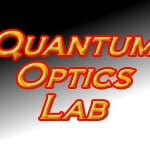Professor Raymond Shaw (Physics/EPPSI), “Holographic Measurements of Cloud Microphysical Properties: Transitioning HOLODEC to Community Airborne Research Platforms,” NASA
From Tech Today.
Professor Raymond Shaw (Physics/EPPSI), “Holographic Measurements of Cloud Microphysical Properties: Transitioning HOLODEC to Community Airborne Research Platforms,” NASA
From Tech Today.
According to the Intellectual Property Citation Index (IPCI), a product of the National Applied Research Laboratories in Taiwan, Michigan Tech particularly excels in research related to instruments and instrumentation, materials science, electrical engineering and physics.
As an example, physics Professor Yoke Khin Yap’s investigation of boron nitride nanotubes “has yielded important results and has been a recipient of funding from the prestigious National Science Foundation Innovation Corps program,” said Baker. Yap’s research points towards a number of commercial applications in a range of industries from aerospace to alternative energy to medicine.
Read more at Tech Today, by Kevin Hodur.
Yoke Khin Yap (Physics), Co-PI Dustin Winslow (Physics) and Co-PI
John Diebel (IIE) have received $50,000 from the National Science Foundation for a six-month project, “I-Corps: High Quality Boron Nitride Nanotubes.”
From Tech Today.
I-Corps: High Quality Boron Nitride Nanotubes
There are few research groups in the world capable of producing high-quality BNNTs. Based on their unique capability in growing high-quality BNNTs researchers will investigate a scanning chemical vapor deposition (SCVD) technique.
Read more at NSF.
The Department of Physics welcomes Sanjeev Gupta, a Fulbright scholar, who came to Tech Oct. 22. Gupta was awarded his PhD in physics from Bhavnagar University, India, in 2010, and spent time as a postdoctoral researcher at the Universita di Modena e Reggio Emilia, Italy. His time at Michigan Tech will be spent primarily with Professor Ravi Pandey’s research group.
Gupta will help design advanced materials that can be future building blocks for solar cells, batteries, and photonic and optoelectronic devices.
From Tech Today.
 Two teams from Michigan Tech have been chosen to join in the Michigan Clean Energy Venture Challenge. One of the teams is GreenedIt!, a web-based application for energy auditing.
Two teams from Michigan Tech have been chosen to join in the Michigan Clean Energy Venture Challenge. One of the teams is GreenedIt!, a web-based application for energy auditing.
GreenedIt! team members are physics students Travis Beaulieu, an undergraduate, and graduate student Abhilash Kantamneni. The team traveled to East Lansing for their initial training this past weekend.
“The training we received through the challenge was incredibly useful,” said Beaulieu. “The whole point was to try and get young entrepreneurs into the mindset of finding a customer need and forming the idea around the customer’s feedback. Thankfully this training worked for our team, and we had a complete pivot during the weekend.”
Read more at Tech Today, by Dennis Walikainen.
Professor Yoke Khin Yap (Physics/MuSTI), “Synthesis and Characterization of Functional Boron Nitride Nanostructures,” NSF.
From Tech Today.
 Professor Robert Nemiroff’s explanation of the science behind the aurora borealis was the lead story in Wednesday’s Great Lakes IT Report and was featured on Science Daily and Phys.Org.
Professor Robert Nemiroff’s explanation of the science behind the aurora borealis was the lead story in Wednesday’s Great Lakes IT Report and was featured on Science Daily and Phys.Org.
The image credit can be found in the Astronomy Picture of the Day for October 5, 2012.
The Science Behind those Eye-Popping Northern Lights
Read more at Michigan Tech News, by Marcia Goodrich.

Publications, honors, and patents have been updated for the Quantum Optics Group at Michigan Tech. The research group is led by Dr. Kim Fook Lee, who is interested in experimental quantum optics and biophotonics. In the area of quantum optics, Lee is interested in developing entanglement source for quantum cryptography, communication and information processing.
Physics Colloquium
Michigan Technological University
Thursday, September 27, 2012
4:00 pm
Room 139 Fisher Hall
Nano-Magnets and Nano-wires
Dereje Seifu
Morgan State University
Baltimore, MD
Associate Professor Ranjit Pati (Physics) has received $69,128 from the NSF for a one-year project, “EAGER: Designing a Molecular Scale Spin-Switch.”
EAGER stands for EArly Concept Grants for Exploratory Research.